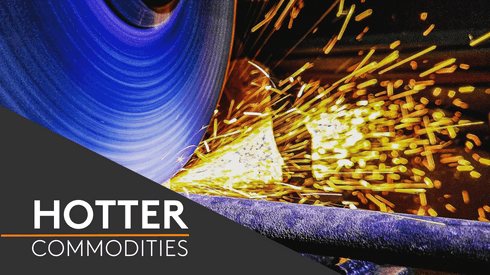“We’re very positive about the medium- and long-term outlook for copper, but it’s very difficult to predict the short-term – it’s so sentiment driven,” Quirk said.
“A week or two ago, people would have been bearish on China. But now, with the country’s stimulus activity combined with the actions by the US Federal Reserve [to cut interest rates], we’re seeing more positive sentiment, and that’s obviously helping copper prices,” she added.
The three-month copper price on the LME was $10,084.50 per tonne at the 5pm close of trading on Wednesday October 2, up by 1.06% from Tuesday’s close.
Get notified when Andrea Hotter publishes new articles and interviews on the natural resources sector. Receive the latest stories straight to your inbox.
Key supply challenges include the ongoing demand drivers for copper used in electrification and renewable energy, the surge in demand for the metal in the electrification networks at data centers, as well as the lack of new mine projects in the pipeline, according to Quirk.
“Over the last two years, customers have been saying things are really good. There has been an overhang from China’s property sector, but it’s been more than offset with these new uses for copper. Maybe these secular trends will help reduce copper’s cyclicality,” Quirk said.
There are also concerns that higher copper prices could spur a shift to a substitute away from the metal, whereby this has typically meant a move to aluminium in previous years, although the level of substitution has been relatively small, according to Quirk.
“Over the years, where it makes sense to substitute copper out, the easy things have already been done. Copper’s property of conducting electricity is very hard to replicate, but there are certain segments that you can use aluminium, and those are being done at the margin,” Quirk said.
“But substitution hasn’t been that significant of a factor – something to the order of 1-2%,” she added.
Freeport is focusing on growing its supply, with a major internal leaching initiative as well as some development projects it plans to pursue. The leaching initiative involves using new technology to enhance the recovery of materials from its existing leach operations.
Around half of the company’s leach stockpiles are located at Morenci, which is an open-pit copper mine in Arizona. Around 16% of the total is located at Freeport’s sites in South America, with the remainder at its other operations in the US.
Freeport has already hit its initial leaching target of 200 million pounds (roughly 90,700 tonnes) at the end of last year and is looking to continue to scale this up, with an objective to get to 300-400 million lb in 2026, Quirk told Fastmarkets.
Leaching is a process that removes material from a mine and places it directly into a stockpile. These stockpiles are then irrigated with a leach comprising a sulfuric acid solution, which breaks down the material and leaches the copper mineral to allow the copper to dissolve and be collected.
“Leaching allows us to bring on additional pounds of copper at a time when our grades are low, so it’s incrementally positive from a production standpoint,” Quirk said.
“Then financially, it helps us bring down our costs in the US because the cost of these incremental pounds is below $1.0 per lb of copper and our average in the US is around $3.0 per lb,” she added.
Freeport’s copper sales in the second quarter of 2024 were 422,294 tonnes. The company expects sales of 1.85 million tonnes of copper this year.
In Hotter Commodities, special correspondent Andrea Hotter covers some of the biggest stories impacting the natural resources sector. Sign up today to receive Andrea’s content as it is published.






